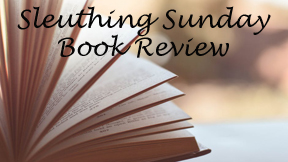“Unfinished Portrait” (1934), Agatha Christie’s second Mary Westmacott novel, is a straightforward bildungsroman of Celia going from childhood to a suicide attempt to possible peace as she nears middle age. It’s not as fun of a ride as the twisty, multi-perspective “Giants’ Bread” (the first Westmacott) nor as polished as “Absent in the Spring” (the third).
It doesn’t have a gripping plot or pointed stakes. This could be a knock against it, but it also shows how Christie is simply telling the story of someone’s life. The real world doesn’t deliver drama the way fiction or cinema does, but it can deliver moments of poignant heartache.
Additionally, because this is a thinly veiled autobiography of Christie’s own life up to age 39 (which goes through the 1920s), it’s a treasure trove for her fans. She drops fun nuggets of information, which we can surmise come from her experiences.

“Unfinished Portrait” (1934)
Author: Agatha Christie, writing as Mary Westmacott
Genres: Character study, family drama, romance
Setting: 1890-1929, England
Stumbling into authorship and marriage
In an illuminating tidbit, Celia submits her first novel to a publisher; it’s filled with accuracies about her subject, because husband Dermot has encouraged her to do the research. The book is rejected, but the publisher likes the earlier draft, with its inaccuracies. “Write what you know, but not always,” is the surprising lesson.
“You can be imaginatively dishonest, but not practically dishonest” (the publisher says in chapter 15). “You can’t write lies about something you don’t know. You’ve got to write about the fabulous (fabulous to you) and not about the real. Now go away and do it.”
The lump-in-your-throat takeaway of “Unfinished Portrait” is the pain of a broken marriage. Celia’s approach here is fascinating. She knows the hurt is so extreme because she loves Dermot so much; if she hated him, it would be easy. She’s able to see everything from his perspective, such as his desire to golf with his buddies rather than spend weekends with her. She chastises herself for not being able to adjust to him. Celia has mastered self-loathing.
This gives readers an emotional portrait of Chrisie’s marriage to Archie, as well as her strained relationship with daughter Rosalind (Judy in the book). Celia loves Judy, but can’t connect with her; she is, as the saying goes, “her father’s child.” But the prose is so from-the-heart that it wouldn’t matter if you didn’t know Celia stands in for this famous author.
Attachments and trust
“Unfinished Portrait” is blatantly personal, but – perhaps accidentally, to a degree – there’s a lot of universality in here. Christie makes wise statements about the cycle of trust. You trust someone, they hurt you (but Celia blames herself for putting Dermot on a pedestal), and then you yourself become meaner toward the world. Celia pays such an emotional price for this wisdom she doesn’t think she can try marriage again.

While some readers might be surprised that Celia’s harsh lessons come when she is in her 30s (rather than say, her teens), it reads believably. Before that, we see her wonderful childhood with mother Miriam and her grandmother (simply called Grannie), plus father John before he dies at a young age.
Celia is attached to her country house and struggles to move on. Attachment to places and objects is also explored in the poignant sequence of the younger generations helping Grannie move out of the house she’s lived in her whole life. Trunks upon trunks are filled with useless items, each of which holds a pang of the past.
“Unfinished Portrait” can be treasured for something it didn’t possess at the time of publication: its snapshot of customs that are no longer in place. Most striking is the way courtships worked. Celia receives so many marriage proposals that – if this were the 2020s rather than the 1920s – it would be hilarious. But in that era, marriage proposals were more akin to asking for a second date today.
Clunky frame job
I have to ding “Unfinished Portrait” for its unbelievable framing mechanism. Celia is relatively shy; if we weren’t privy to her running internal monolog, she’d remain a blank slate. Yet she pours out her life story to a stranger.
This man finds her at a cliff’s edge and she numbly tells him her entire life story from nighttime till sunrise. The man chips in his own insights here and there in italics, but all details come from Celia’s narrative; he doesn’t fictionalize.
I don’t buy that Celia’s story is fascinating enough to keep this man up all night – unless perhaps he’s crushing on her, which he isn’t (although judging by the slew of previous marriage proposals, it would fit). It turns out he’s just a great guy who believes his open ear will keep a fellow human from killing herself. He’s “Unfinished Portrait’s” most mysterious character – almost a Mr. Quin – but I think this framing mechanism is for the sake of a dramatic starting point.
But I’m not too bothered by not knowing that fellow. I come away from “Unfinished Portrait” knowing Christie (via Celia) not as the Queen of Mystery, but rather as a human being who thinks and feels deeply. I sense she would’ve preferred to be known that way, rather than as a celebrity genius of her craft.
Sleuthing Sunday reviews an Agatha Christie book or adaptation. Click here to visit our Agatha Christie Zone.

